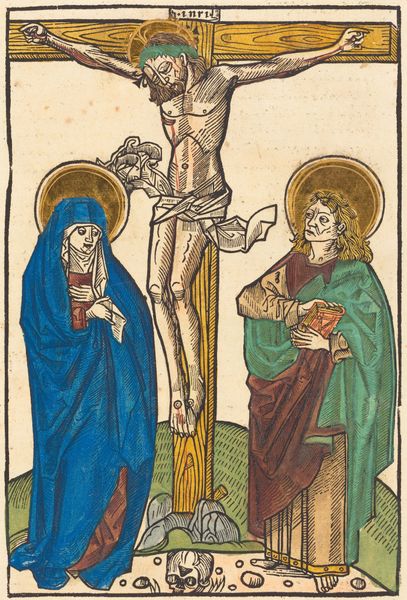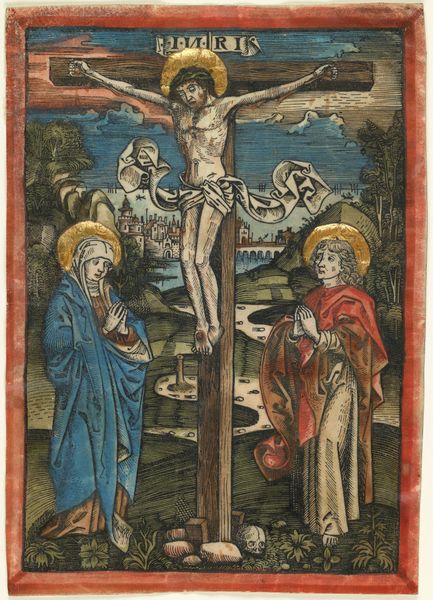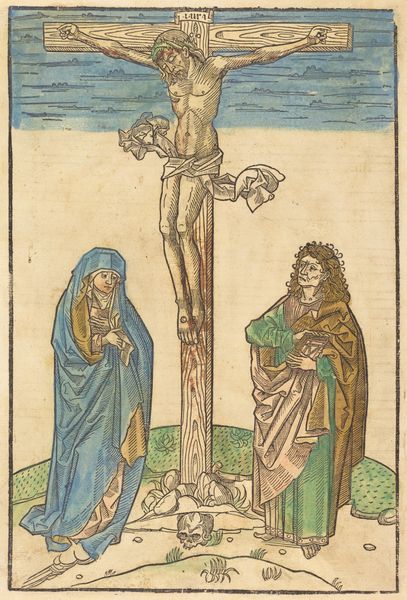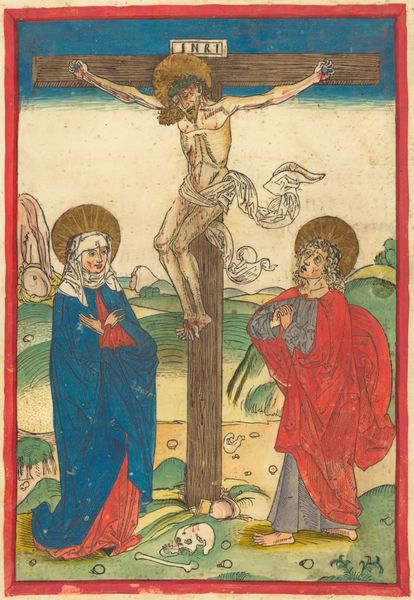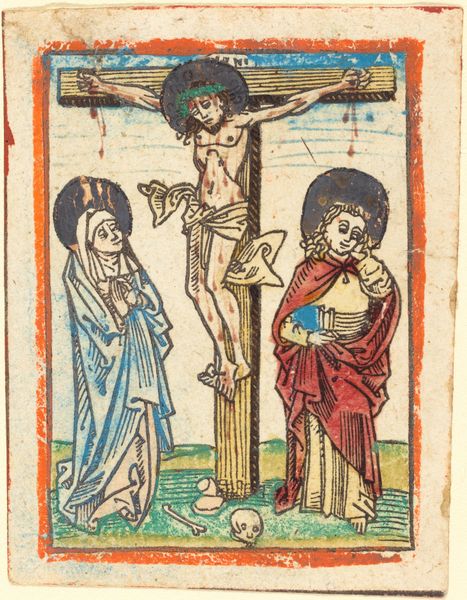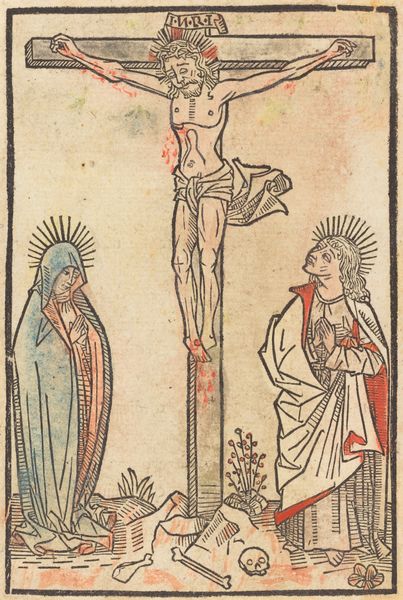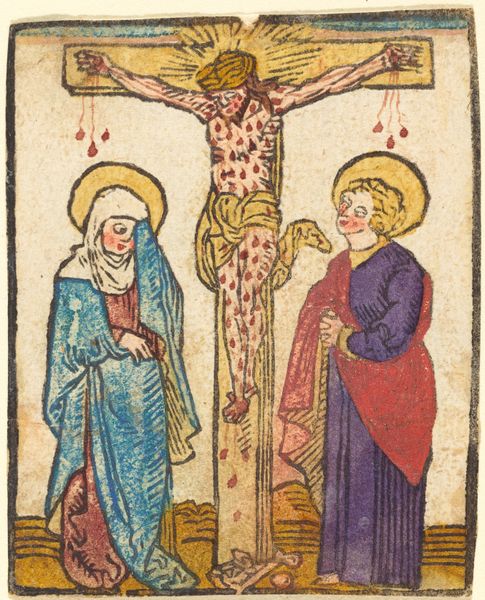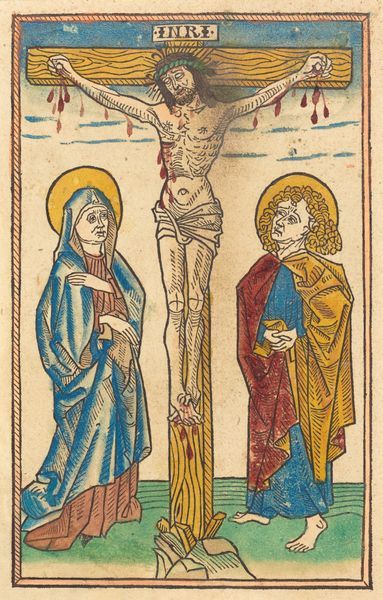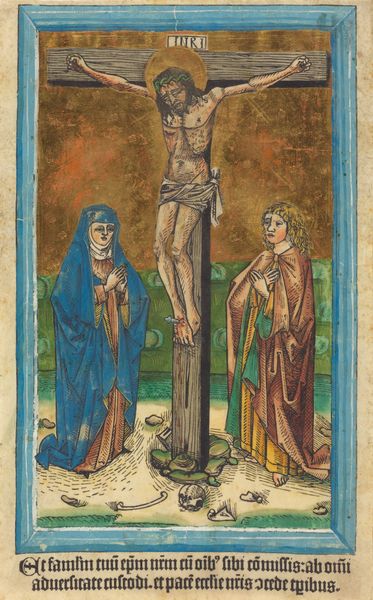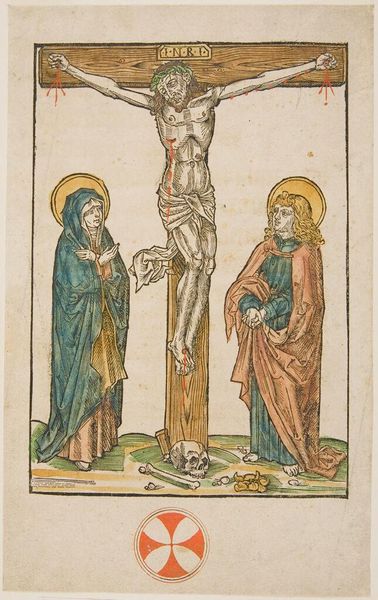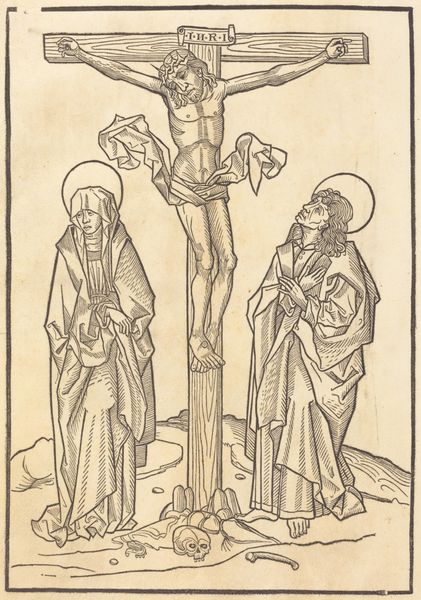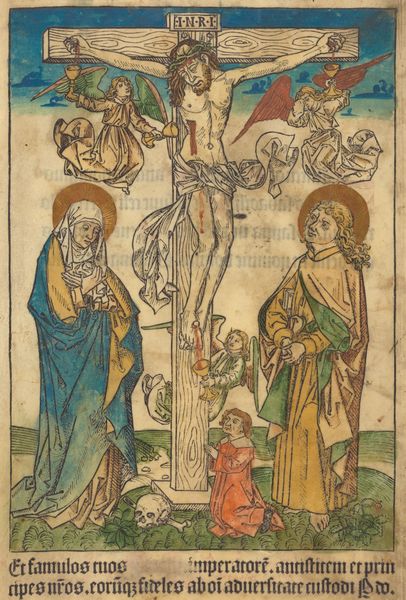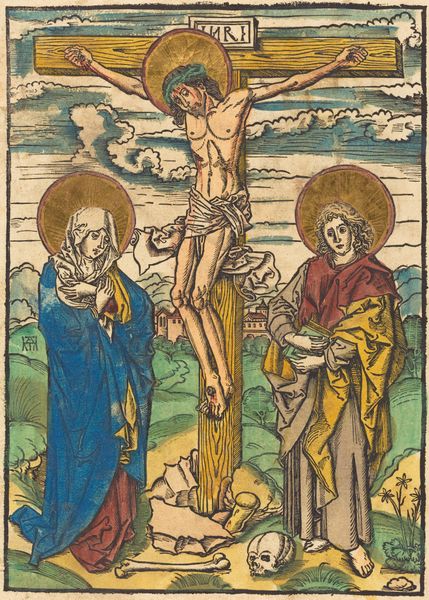
print, woodcut
#
medieval
# print
#
caricature
#
figuration
#
woodcut
#
history-painting
#
northern-renaissance
Copyright: National Gallery of Art: CC0 1.0
Editor: This is a woodcut titled "The Crucifixion," dating from around 1490 to 1500. It's striking how graphic the imagery is. What details stand out to you as you analyze it? Curator: Immediately, I’m drawn to the stark, almost brutal, quality of the line work. Consider how the artist renders Christ's emaciated body—the etched lines create sharp angles, emphasizing suffering through deliberate distortion. Notice the restricted colour palette, a common characteristic of early printed works. The contrasting blocks of colour call attention to different compositional elements. Editor: So, you are drawn to the formal choices, the lack of colour and stark linework... Curator: Precisely. Also, observe how the composition, divided vertically, reinforces the separation between the figures. The two figures at the foot of the Cross—Mary and John, or another disciple— frame the central figure. What does the lack of shading tell you about the function of the print? Editor: Perhaps that the artist’s interest was in stark and immediate emotional communication, foregoing illusionism to achieve emotional and narrative clarity? The flat colours contribute to this... almost blunt presentation. Curator: An astute observation. Further consider the symbolic significance of the skull at the foot of the cross. Editor: The skull is jarring! Its inclusion definitely amplifies the underlying tension and reinforces the symbolic representation of Christ's triumph over death. This analysis offers a fascinating look into the relationship between formal execution and symbolic content! Curator: Indeed. Through analyzing these aspects, we can unlock a richer understanding of the artwork itself.
Comments
No comments
Be the first to comment and join the conversation on the ultimate creative platform.
